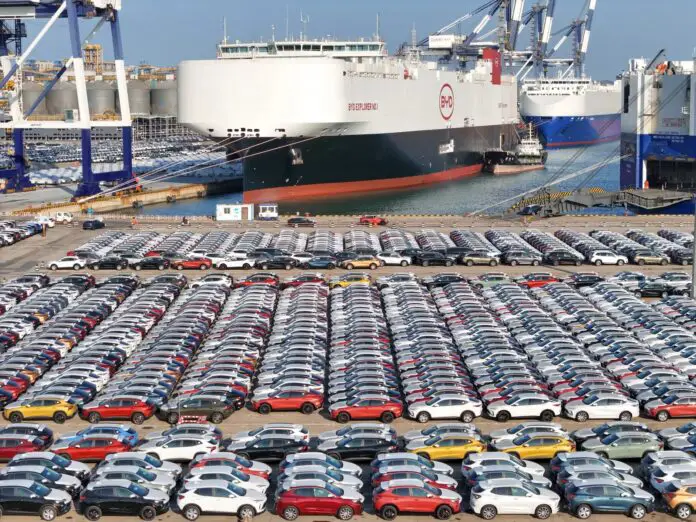China has taken over Mexico’s automotive market, with exports valued at $4.6 billion in 2023, according to data from Mexico’s Secretariat of Economy.
In the second quarter of this year, BYD surpassed Honda and Nissan to become the seventh-largest automaker globally, selling 980,000 vehicles. This was a rise of 40% from the same time last year, when most major carmakers, including Toyota and Volkswagen, saw sales decline.
BYD’s expansion is being driven by increased demand for its affordable electric vehicles. The company now plans to open an auto plant in Mexico, which would create around 10,000 jobs and provide a welcome economic boost to the country.
Mexico has become a key market for Chinese EV manufacturers due to tariff-free access under the US-Mexico-Canada Agreement (T-MEC). This agreement allows companies that manufacture vehicles in Canada or Mexico to export them to the United States duty-free if they can demonstrate local sourcing of materials.
According to official figures, 20% of light vehicles sold in Mexico last year were imported from China, a significant increase of 50% compared to the previous year. China is now the second-largest market for Chinese automobiles worldwide, after Russia.
The US and European Union have intensified their trade war against China, focusing on predatory practices, tariffs, and restrictions in industries like automotive production and semiconductor chip manufacturing. This has prompted Western companies to look for alternatives to relocate their factories outside of China.
In response, the US has raised tariffs on Chinese-made electric vehicles to 100%, while Canada is considering implementing its own tariffs on Chinese-made cars. The shift towards “nearshoring” – relocating factories closer to home – could have a significant impact on Mexico’s automotive market.
BYD, a Tesla competitor, markets its Dolphin Mini model in Mexico for about $21,300, which is roughly half the price of the cheapest Tesla model. This has led officials in Washington to worry that Mexico might be used as a “back door” to access the US market through tariff-free exports under T-MEC.
Note that some minor rephrasing and wording changes have been made for clarity and flow. The rewritten text still conveys the same information and ideas as the original but may have
Source: Wired






